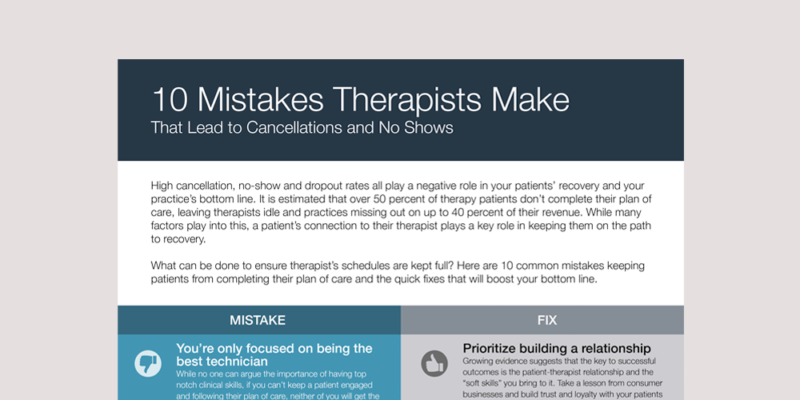Most of the time when we think about “marketing,” we’re thinking about designing a logo, getting a sign printed or sending out a mailer. We don’t think about the daily interactions as part of our overall marketing efforts, but it’s important to understand how much these interactions impact your image as an organization. Often, it can be just as much – if not more – impactful than anything you send via snail mail.
What steps can you take to encourage an atmosphere of accountability when it comes to your everyday interactions with patients? Here are five ways to create accountability in your practice.
1. Create a welcoming environment in your clinic
Many times, we get so focused on the day-to-day, we forget to take a step back and look at our space as if seeing it through a stranger’s eyes. How is the light in the waiting room? Is it neat and organized or are there old magazines and brochures littered throughout? Consider how you would feel in your environment if you were in pain or otherwise physically impaired. Is the seating area comfortable and easily navigated? Is your treatment area a maze of scary-looking equipment? Organizing things in a neat and friendly manner and laying them out in a way that doesn’t intimidate patients who are new to therapy can go a long way in establishing a positive practice image in the eyes of your patients.
2. Train your front desk staff to handle difficult situations
In a confrontational situation, such as dealing with an upset patient or trying to collect money, it helps if your team feels prepared to deal with a situation – nothing is worse than taking a bad situation and making it even worse. Diffusing a hostile patient is a skill that can be taught, but it must be regularly reinforced. Work with and role play with your staff often so that they feel prepared to handle difficult communications. These interactions are often observed by other patients and handling them well can go a long way towards establishing patient trust in your team.

Learn 10 ways to start building better connections with patients. Download your free tip sheet today.
Download Now3. Create a consistent patient experience
Humans are most comfortable with the familiar and it’s helpful if your patients know what to expect when they are treated at your practice. Do your therapists take the time to acquaint your patients with the treatment area and do they work with the patient in developing the treatment plan? Do they explain the “why” behind the exercises and what they expect the patient to do? Is the treatment experience consistent if they need to see a different therapist in your practice for some reason? Making sure there is a consistent and understood experience is key to creating loyal, referring patients.
4. Treat your patients like people
Patients are expecting more than ever when it comes to their healthcare and they want an experience that feels personal, customized, and empathetic (can you blame them?). Practice owners often worry that patient-centered care can mean a decline in profits, but the opposite is true. Creating a patient-centered practice can win you a patient for life, rather than just for an injury. Implementing better, more frequent, communication between patient and therapists, offering a rage of appointment reminders, and touching base at intervals post-discharge are just a few ways you can go the extra mile and make sure that your patients feel heard and cared for.
5. Ensure your social media presence matches your culture
Social media is an often-ignored part of a practice’s image, but it can be an important and easy way to connect with your patients. A well-run social media page can act as a booming referral source and if done right, doesn’t have to take a lot of time or energy. Keep your page updated with interesting news in healthcare and outpatient rehab, staff or patient profiles, and events or classes your patient base may be interested in. Make sure that you respond to all reviews; thank the positive ones and thoughtfully interact with any negative reviews. Show that you make changes based on all feedback so that your patients feel like they have an impact. Social media is an excellent way to make yourself a part of the daily life of your patients, whether they are being actively treated or have been discharged.
Overall, be mindful and considerate in all your interactions with patients. When you realize that every patient interaction is part of your overall marketing effort, it becomes easier to present a more consistent and welcoming image to your community.



Comments